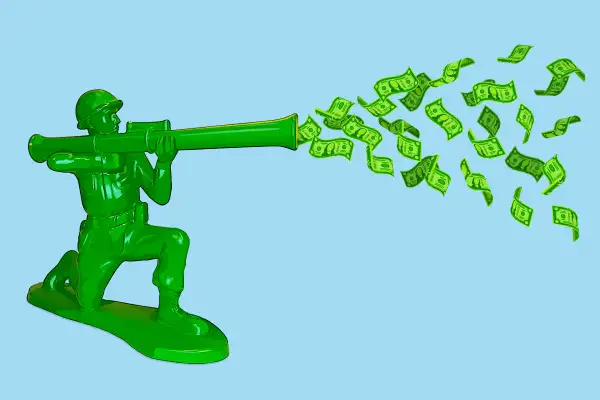Wall Street Is Cheering on the Fed's 'Bazooka' Strategy to Get the Economy Back on Track. Here's How It'll Affect You Personally
Money is not a client of any investment adviser featured on this page. The information provided on this page is for educational purposes only and is not intended as investment advice. Money does not offer advisory services.

While the $1,200 stimulus payments the Treasury has promised to send out to millions of Americans might be getting the most headlines, the recent actions taken by the Federal Reserve might ultimately have the most impact on your household budget.
Even when the Fed jumped into the fray during the height of the financial crisis by cutting interest rates to zero and launching an unprecedented bond-buying — a.k.a. quantitative easing — campaign, its actions then were nothing compared to what Jerome Powell and his fellow monetary policymakers are embarking on now.
The Fed has dropped its benchmark interest rate as low as zero, it rolled out quantitative easing measures that dwarf the ones it implemented during the financial crisis, and it has pledged to support sectors of the market ranging from overnight lending to mortgage-backed securities.
Ever fond of a good war metaphor, Wall Street has dubbed these extensive efforts to halt the coronavirus fears in their tracks 'firing the bazooka,' as if Chairman Powell were a G.I. using his most powerful weapon to halt a menacing German tank.
While much of the minutiae is super-technical, there are some real-world implications for your personal balance sheet. Here’s how the Fed’s actions could impact your personal finances.
Your Investments
The coronavirus pandemic has knocked the stock market off its record-long bull run and contributed to unprecedented levels of volatility — but things could have been even worse without the central bank's intervention. The Fed stepped in and slashed its benchmark rate to a range of 0% to 0.25%, and announced plans to buy unlimited amounts of Treasuries and mortgage-backed securities, as well as funneling liquidity into other debt markets to ensure that the market can function normally. These measures have calmed Wall Street to an extent, although volatility remains at historically high levels.
On the flip side, Treasury yields are trading at or near all-time lows, which makes things tough for savers. According to the FDIC, the average savings account currently earns a paltry 0.07% interest.
Your Credit Card Debt
Since nearly all credit cards on the market today have variable rate APRs, a lower Fed rate means lower credit card APRs. The average APR was just below 15% as of February 2020, according to the most recent Fed data. It's likely that dropping rates all the way down to 0% again will mean lower credit card APRs for many within two or three months.
Between 2015 and 2019, the Fed raised the low end of its benchmark rate range from 0% to 2.5%. Many issuers not only passed on those rate increases but also raised their APRs even further, especially for borrowers with sparse or spotty credit histories.
Your Student Loans
Federal student loans have fixed rates, meaning this won’t affect borrowers with current loans, but the Fed's big rate cut could benefit students who plan to take out loans in the near future, when rates could be lower. (Rates for existing loans stay the same, but the interest for new loans changes annually.) Some private student loans have variable rates, which could tick down, similar to the movement in credit cards.
Your Mortgage
Mortgage rates hit an all-time low last month when the average 30-year fixed rate mortgage dropped to 3.29%, prompting a surge in refinancing. It was surprising to many when mortgage rates spiked by about a third of a percentage point in a single week shortly thereafter (it might sound like a small number, but that is a huge movement in such a short space of time).
Experts attribute the bouncing around to a combination of two things: The rush to refinance overwhelmed lenders, and the stock market’s tumble into bear market territory prompted many investors to abandon mortgage bonds for cash. The good news is that the Fed's pledge to boost liquidity by buying mortgage-backed securities — to a potentially unlimited degree — returned some semblance of normalcy to the market.
The return to near-record lows won’t benefit all borrowers equally, though: The Fed's bond purchases are relegated to government-backed (ie. Fannie Mae, Freddie Mac) loans, which means that borrowers must meet credit, income and down-payment requirements for a "qualified" mortgage. Mortgages with interest-only or balloon payments, negative amortization and so-called "no doc" loans are excluded, as are jumbo loans.
More from Money:
How to Know When the Stock Market Has REALLY Hit Rock Bottom
30-Year Mortgage Rates Are Back Near Record Lows — For Some Borrowers

